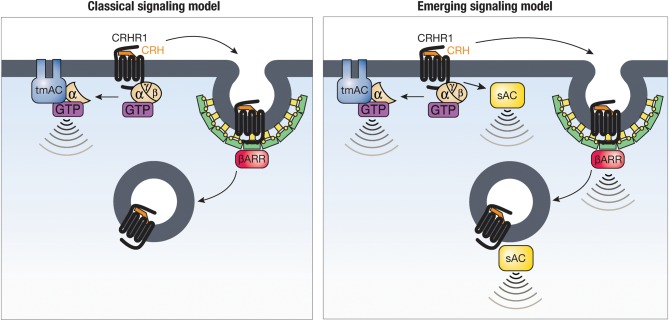Figure 3.
A new mechanism of CRH-activated CRHR1 signaling. In the classical model, CRHR1 activation by CRH is followed by a rise in cAMP mediated by G protein–dependent tmACs. Binding of β-arrestin2 to agonist-activated CRHR1 triggers receptor internalization leading to termination of agonist-activated G protein-mediated signaling. In the emerging model discussed in this work, an atypical pool of cyclic AMP is generated by soluble adenylyl cyclase (sAC) in response to CRHR1 activation in addition to cAMP generated by tmACs. In hippocampal neuronal cells cAMP was found to activate specific signaling pathways that are dependent on the source (tmACs or sAC) and cellular location (cell surface or endosomes) of the cAMP generation. In particular, sAC was critical for endosome-generated cAMP in response to CRH.

 This work is licensed under a
This work is licensed under a 